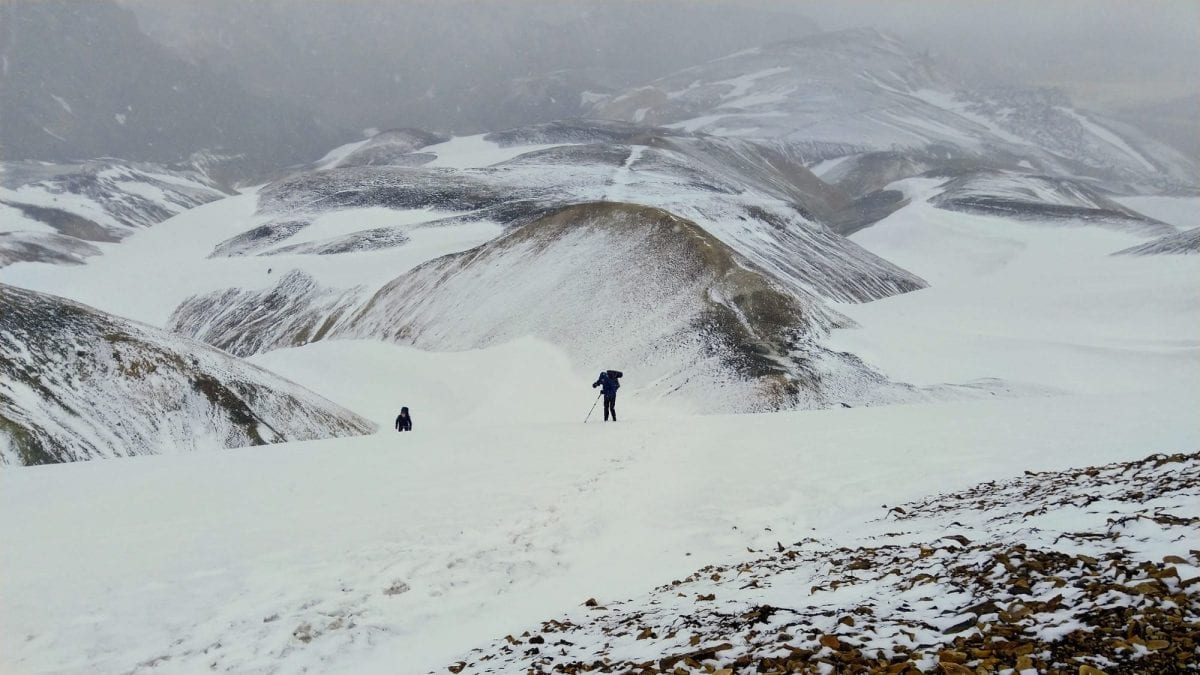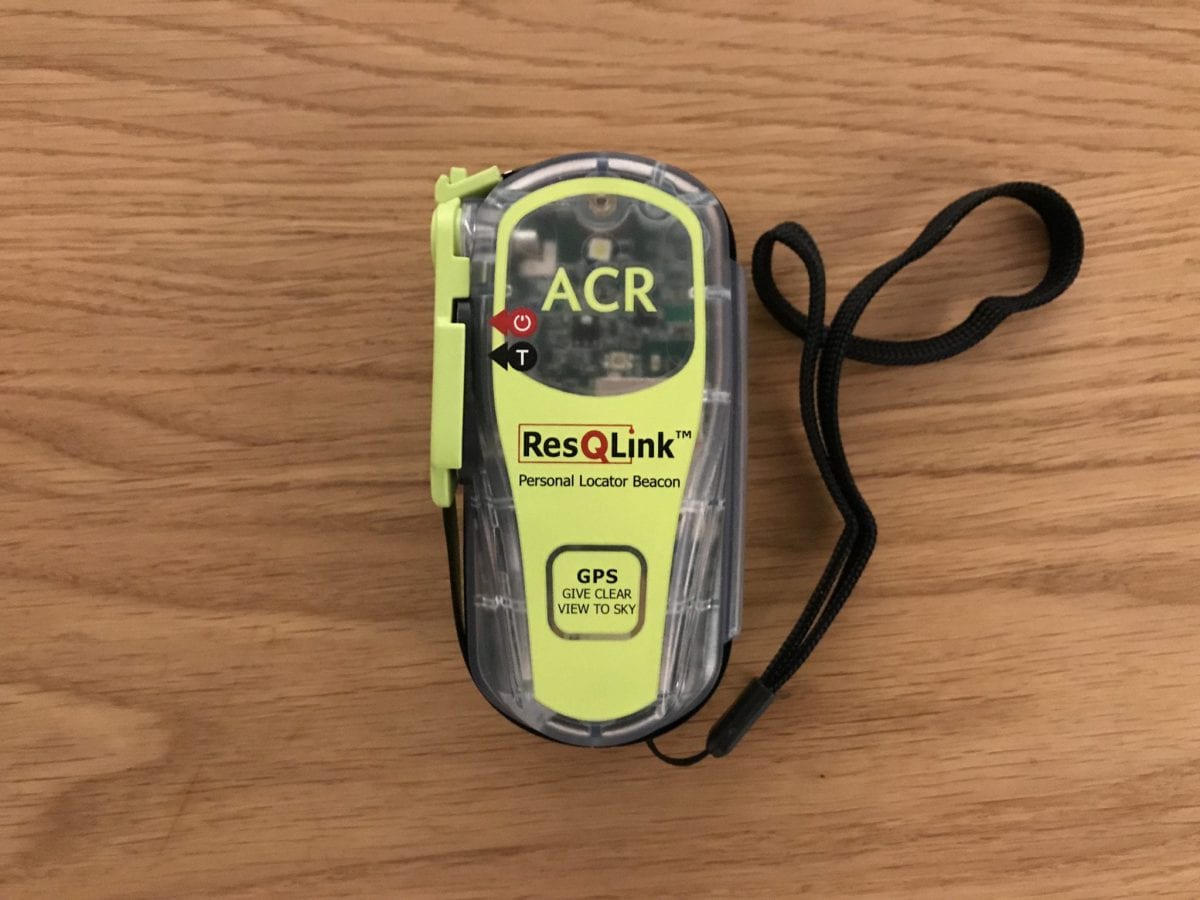Literally the first thing people would ask me when I talked about hiking the Arctic Circle Trail in Greenland was asking about the polar bears. What about the dangers of polar bears? I would laugh it away every time and would say there had not been any polar bear sightings anywhere near the trail in the last 10 years. But that changed in September 2019, when polar bears were seen on two stretches of the trail. And this changed things quite a bit. I’m ok with preventing snake bites and I know quite well what to do when I get bitten by a snake on -let’s say- the Jordan Trail. But polar bears are something quite different. So here’s on the proverbial polar bear in the room when hiking the Arctic Circle Trail: What to do when you encounter a polar bear?Local Greenlandic guides tend to say, if you can see the bear with your naked eye, then it is too close. So as cool, adventurous and appealing a polar bear sighting might sound like – well, it isn’t. As it might quite literally be a once-in-a-lifetime experience. There is also a well-known rhyme about encountering bears: If it’s black, fight back / If it’s brown, lay down / If it’s white, good night. And let’s say the ‘good night’ part does not refer to sleeping carelessly …
But let’s step back and explore the challenge from start to finish: what is the chance of encountering a polar bear, how can you avoid a polar bear encounter and finally … what to do when you do encounter a polar bear? I used information from Visit Greenland, the guidelines from the Government of Greenland, multiple digital sources and my own experience below.
- As I started my post, there were sightings on or near the Arctic Circle Trail in 2019 after a long period of no polar bear sightings. There were It does not necessarily mean there will be incidents in the coming years, but it is no longer the case that there are definitely no, never polar bears on or near the trail.
- Around 2200 polar bears (a stable number throughout the years) live on the Greenland West Coast, with a similar (or probably even larger) amount living on the Greenlandic East Coast. Although polar bear sightings in Greenland are generally very rare, they do occasionally come near towns and settlements, attracted by the scent of food.
- Since 2012, biologists have been keeping track of human-polar bear contacts. Between 2012 and 2017, 16 polar bear charges have been registered. A ‘charge’ is defined as when a polar bear moves deliberately towards a human with the intention to attack and kill. Unlike other bears – and this is not very comforting – polar bears do not make warning charges to scare people off. So if you’re charged, yeah … sh*t.
- Between 2012 and 2017, there were 2 polar bear attacks where people were injured but not killed. Attacks (in contrast to charges) are defined as a situation in which a polar bear makes physical contact with a person. The likelihood of being attacked by a polar bear, in general, is very rare. There are only one to three instances a year, worldwide (*).
- As of 2018, there have not been deadly polar bear attacks in Greenland in the last 25 years.
A few things that help preventing. It is good to understand that polar bears are very curious. In a world of ice blocks and ice holes, anything else gets their attention. Therefor, attack circumstances are always related to the way people are camping or to people predisposing themselves to a problem (*). And with more polar bears driven ashore as the sea ice melts, the chances for encounters increase. A campsite is an attractive nuisance. It has bright-colored tents, unusual odors, and sounds. A polar bear is an animal that routinely investigates its environment. If you haven’t taken proper measures, you are at risk. So here are a few things you can do:
- Stay informed. Being aware of possible sightings near the Arctic Circle Trail helps massively. So keeping an eye on local news or the Arctic Circle trail Facebook group helps a lot. What I usually do is have my family at home keep me informed as well. During my hike, I will ask them to keep checking the weather and to check -in this case- the Facebook group and send me a message on my satellite phone.
- Handle food and waste well. Ensure that sleeping tents and food stock are separated by a minimum of 50 meters. Handling of waste and its disposal must also be positioned well away from tents and the food stock.
- Camp placement. When placing your camp, avoid areas with active glaciers, with pack ice (on ice), ravines/crevasses along the coast, where there is a polar bear den nearby, where there are traces of polar bears; tracks, fresh feces, etc. and spots that may disturb your hearing, e.g. a river.
Then, when you are truly entering ‘polar bear’ country.
When sightings are common, things change a lot. I personally would always avoid these situations and/or always go with a guide. It is advised to never go into bear country without a deterrent—either bear spray or firearms. Bear spray, also called pepper spray or capsicum deterrent, is a form of pepper spray used as a tool to minimize injury due to bear-human conflict. It is sprayed at a bear within close range and burns its eyes, nose, and mouth, but causes no lasting damage. Dr. Tom Smith, professor of biological sciences at Brigham Young University and a scientific advisor to PBI researched different deterrents and says
Bear spray is 98 percent effective in all bear cases I studied and has shown promise with polar bears. In two instances of curious polar bears approaching, the bears were deterred by the spray. There’s no reason to think that pepper spray would be less effective on polar bears than on other bears. There are only three cases where a person had bear spray and was still mauled (none of these were fatal).
Firearms are 76 percent effective, but people aren’t trained to shoot something that is chasing them down and trying to eat them. Culturally, it is more difficult to get people to carry bear spray instead of a firearm, even though bear spray is more effective and easier to use.
Signal flares are also very effective if the bear is outside of bear spray range (about 20 feet). Flares have a 300-foot reach and are waterproof. Bears have a problem with screaming fireballs; that almost always settles it.
The government of Greenland has very specific advice: When camping in high-risk areas for polar bear sightings, you should always have a polar bear guard and/or a warning system (e.g. tripwires). In areas where observations of polar bears are frequent, it is recommended to carry a rifle of cal. .30-06 as a minimum, loaded with soft point ammunition, at all times.
I did look to bring bear spray with me myself. However, pepper spray and bear spray are illegal in both of my home countries of Belgium and The Netherlands. So I will have either have to let go of that idea or buy it in Greenland (e.g. at the Sisimiut Outdoor in Sisimiut).
- The bear does not see you. Move away very quietly while staying out of sight. Position yourself so that the wind doesn’t carry your scent towards the bear. A polar bear’s sense of smell is acute, and it is the most important sense for detecting prey on land. A polar bear can most likely smell a seal from more than 1 km away and 1 m under the snow.
- The bear sees you but stays calm. Move away from the bear very slowly and quietly, in a sideways direction while keeping an eye on the polar bear.
- The bear is curious and begins to move nearer. Wave your arms and make loud noises. Shout loudly and/or bang things together like two water bottles, pans, lids, etcetera. Prepare your weapon or signal flare (if you have one).
- The bear charges for an attack. In case you have bear spray: use it to create a “cloud” of spray in between you and the bear. In case you have access to a weapon or flare pistol: explode a signal flare directly in front of it. Prepare to shoot in self-defense. If the bear continues to charge, aim right under its chin and shoot.
- The bear attacks. Fight with all possible means, whether it is a knife, a stick, or whatever you can find. Kick or hit the bear hard on its nose and/or eyes. Protect your head, neck, and core as best as possible.
- You managed to escape a bear attack. Call for help via mobile, VHF radio, personal locator beacon, or satellite phone (I have my Garmin InReach Mini). Even if you do not need help, inform authorities. Contact The Ministry of Fisheries, Hunting and Agriculture, the village authorities and the wild life officer. Contact details (as of June 2020): Ministry of Fisheries, Hunting & Agriculture, head of office Amalie Jessen. Phone: +299 Tlf: +299 48 25 20, +299 34 53 04 mobile: +299 55 33 42. mail: apnn@nanoq.gl, amalie@nanoq.gl. Please find the latest contact details in the guidelines from the Greenland government.
In conclusion, a few things you can do to better prevent and/or prepare for polar bear encounters on the Arctic Circle Trail:
- Stay informed. Make sure to track local news for polar bear sightings. Consider asking friends or family to help monitor when you’re on the trail.
- Know what to do. Know what to do to prevent bear attacks and/or what to do when you get attacked.
- Take care of your food. Be sure to air-seal your food and waste. Consider using a bear canister (please be aware: a bear canister often isn’t airtight, it just frustrates a bear into leaving as he will be unable to open it), store food at least 50m from your tent and eat away from your tent.
- Consider taking bear spray. When the proverbial shit hits the fan, it might be worth having bear spray with you.
- Have a communication device. Especially in remote areas, and even more if you travel alone like me, you need
- Have the right contact details. Make sure to have the contact details of the Ministry of Fisheries, Hunting and Agriculture, village authorities, and the wildlife officer with you. I usually add them to my phone and a waterproof contact list.
Let me know if you have additional thoughts and/or tips!



